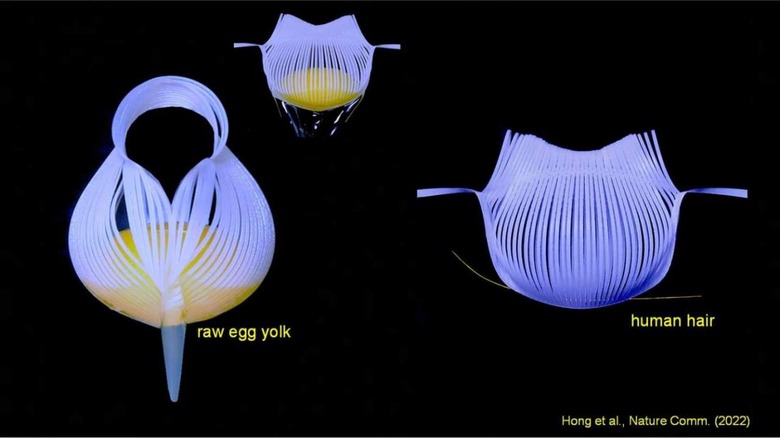This Robotic Gripper Can Lift Delicate Objects Without Breaking Them
Humans have built cranes capable of lifting ridiculously heavy objects and moving them around with ease. We have also designed massive ships to transport large, heavy cargo across thousands of miles without breaking a sweat. But what if we wanted to perform something seemingly less spectacular? What if the goal is to move around an object that isn't too heavy, perhaps even tiny, but that needs to be handled very carefully?
This could be anything from a rare artwork to a costly precision-built machine. It could also be something as mundane as lifting an egg yolk that you want to transport from one bowl to another. The problem with handling these objects is that they are so delicate, applying the wrong amount of pressure will almost certainly compromise their structural integrity and potentially destroy them.
This is the exact problem a group of researchers at the North Carolina State University (NCSU) have been trying to solve. Their solution is a new generation of kirigami-inspired robotic grippers that can lift fragile objects without causing harm.
How do the grippers work?
The new gripper design takes inspiration from the Japanese art of kirigami, which is similar to the more famous paper-folding art called origami; it involves cutting 2D sheets of material and turning them into 3D shapes.
The researchers claim this kirigami-inspired method of converting 2D objects into robotic grippers is "quite a bit" simpler than the previous methods used in designing robotic grippers. In addition, the ingenious idea of using multiple slits also lets the researchers easily customize the shape of the resultant 3D object. In a YouTube video, the researchers demonstrate how their rudimentary gripper prototype can lift multiple objects – including egg yolk and human hair – with little effort.
https://www.youtube.com/watch?v=1oEXhKBoYc8
The researchers also revealed how their kirigami grippers fundamentally differ from existing alternatives. Instead of trying to grip an object by putting pressure on it, NCSU's kirigami grippers do away entirely with the gripping part and instead wrap around an object before lifting it.
Who will benefit?
The kirigami-inspired grippers aren't available for companies to purchase, as the concept is still under development. However, the technique used to create the prototype grippers may one day find use in various industries.
Apart from lifting really fragile things, the NCSU researchers believe these grippers may support several medical and therapeutic use cases. The technique can, for example, potentially be used to create smart bandages that gently wrap around an injured knee, bending and moving with the joint. The technique may also be useful for wearable monitoring devices due to its flexibility, reducing discomfort to the subject, according to the team.
The researchers expressed interest in working with "industry partners" who may help them modify these grippers for other potential real-world applications.


